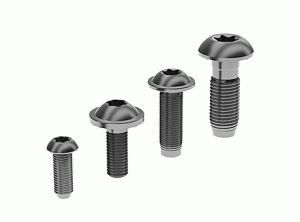
Self-tapping screws are undoubtedly convenient. Unlike conventional screws, they don’t require the use of a pilot hole. You can drive self-tapping screws directly into objects while allowing them to tap their own hole. There are different types of self-tapping screws, however, including self-forming and thread-cutting screws. What’s the difference between self-forming and thread-cutting screws exactly?
What Are Self-Forming Screws?
Self-forming screws are threaded fasteners that displace material during installation. They are classified as self-tapping screws that, like all self-tapping screws, don’t require the use of a pilot hole. Self-forming screws can be driven directly into objects.
When installing a self-forming screw, it will displace some of the object’s material. The threading will cut into the object while subsequently displacing the surrounding material.
What Are Thread-Cutting Screws?
Thread-cutting screws, on the other hand, are threaded fasteners that remove material during installation. Thread cutting screws are classified as self-tapping screws as well. You can install them without drilling a pilot hole beforehand. Thread-cutting screws, however, are distinguished from other types of self-tapping screws by their ability to remove material during installation.
Most thread-cutting screws have sharp surfaces, which allow them to remove material. You can install them using a power tool, such as an electric drill with the appropriate bit. As you drive a thread-cutting screw into an object, it will remove some of the object’s material.
Differences Between Self-Forming and Thread-Cutting Screws
While they are both classified as self-tapping screws, self-forming and thread-cutting screws aren’t the same. They are two different types of self-tapping screws.
Self-forming screws are characterized by their ability to displace material during installation, whereas thread-cutting screws are characterized by their ability to remove material during installation.
Self-forming screws don’t actually remove material. They are known as “self-forming screws” because they form their own hole. During this formation process, they’ll displace material. Self-forming screws will cut out out a hole, which causes material in the object to move around. In comparison, thread-cutting screws remove material.
You’ll see material coming out of the hole when installing a thread-cutting screw. If you’re installing it in a wooden object, for instance, you can expect to see wood shavings coming out from around the head. All thread-cutting screws are designed to remove material.
In Conclusion
Not all self-tapping screws are the same. Most self-tapping screws can be classified as either self-forming or thread-cutting. Self-forming screws are those that displace material during installation. Thread-cutting screws are those that remove material during installation.
